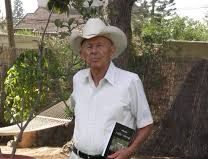J. Amir, T.R. Sinclair
A simple mechanistic model was developedand employs an intermediate approach between the regressionmodel and complex models. It uses a few conservative relationships todescribe crop ontogeny, growth and seed production. Test and validation ofthe model was done against data collected in ten years of Gilat long-term
multi-facto~ experiments in Israel. Observed field response to varying water
and nitrogen treatments were well simulated by the new model. Our
simulation models and the sensitivity tests were presented to interested
agencies in the US Department of Agriculture by Prof. T. Sinclair
Amir, J. and Sinclair, T.R. (1991). Temperature and solar radiation effects on the growth and yield of spring wheat. Field Crops Res.28: 47-58.
Amir, J. and Sinclair, T.R. (1991). Waler limitation on tIhe growth and yield of spring wheat. Field Crops Res.28: 59-69.
Sinclair, T.R. and Amir, J. (1992). A model to assess nitrogen limitations
on the growth and yield of spring wheat. Field Crops Res. 30: 63-78.
Amir ,J. and Sinclair, T. R. (1996)Cereal cyst nematode effects on wheat water use, and on root and shoot growth Field Crops Res 47:13-16-9
J. Amir and T. R. Sinclair (1997)Doubled wheat production in an arid environment using conservation tillage. Tred in Agronomy 1:46-50
Extension of ‘Gilat Method’ for prediction of available phosphorous and
potential cereal nematodes infestation in the soil
J. Amir, I. Mufradi,S. Kleitmam,S. Asido
The soil samples from 500.00 dunam, brought to Gilat each year for evaluation
of available nitrogen, will be used to supply additional information about
available phosphorous and cereal nematodes infestation in the soil. The new
method passed the calibration and validation tests in the laboratory and under
field conditions, and are available for commercial use.
Jacob Amir, Thomas R. Sinclair (1996)A straw mulch system to allow continuous wheat production in an arid climate .Field Crops Res.47:21-31
New technology for achieving economical yields of cereal in drought years in_the Negev
Amir,J., Krikun,J., Orion,D., Putter,H., Mufradi, I., Kleitman,S., Asido,S.
At present there are few agro-technologies for preventing crop failure in arid regions (250mm and less annual rainfall). Low annual rainfall, unpredictable seasonal distribution and poor soil sanitation conditions are the main limiting factors in achieving economical cereal yields. A wheat-fallow rotation ha~ been the most successful crop management till now. However, from a sustainable,
economical and ecological point of view, this type of management has not
proved to be tenable, and the need for a better solution has been long recognized. Twenty years of research by a multidisciplinary team, lead by Dr. Jacob Amir, has resulted in a successful development of a new agrotechnology, based on no-tillage and soil mulch management. This way, the two central problems that cause crop failure in arid regions, high soil evaporation and root pathogen damage, have been solved. In the last three years experience with the new management, the yield of continuous wheat was equal to theyield obtained from fallow-wheat management (both approximately 250kg per1000m2). This achievement should be of enormous importance for the Negev region and other drought prone areas in the world
Amir, J. (1994):. Impact of crop rotation on soil erosion and rehabilitation.
In: Agassi, M. (ed.). Soil Erosion, Conservation and Rehabilitation.
Marcel Dekker, Inc., New York
Amir ,J(1996) . A new technology of non-tillage and soil covering in Negev cereal culture.Hassadeh 76:51-56
J. Amir and T. R. Sinclair (1997)Doubled wheat production in an arid environment using conservation tillage. Tred in Agronomy 1:46-50
